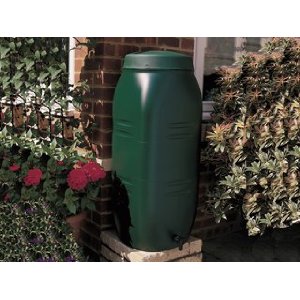Some Environmental Tips for Gardeners
If you’re a gardener, there are lots of ways you can reduce our impact on the environment. The great thing is that most of these tips actually can save you money as well, so heres a few environmental tips for gardeners – thanks to the National Trust for many of these.
Saving Water – add between 5-10cm of much to beds and containers. This cuts down evaporation significantly and means you can water much lees often. Obviously it also helps keep out those pesky weeds. When we’re talking about watering your plants please try and collect rainwater, it’s actually much better for your plants and it doesn’t cost anything.
You can even now get water butts or bigger tanks with integrated pumps although it’s usually cheaper to buy a water butt and then purchase a cheap pump seperately. The water butts don’t have to cost much, here’s a nice slimline one from Amazon for about £20 – 100 Litre Slimline Water Butt Stand & Tap Kit

Environmental Tips Gardeners - Water Butt
If you line, porous wooden and terracotta containers with a lining such as plastic sheeting this will also cut down water loss. It’s surprising how moist the containers will keep with a little bit of sheeting to keep the water from draining away – but remember you do need some drainage holes at the bottom somewhere !
Always water in the evening if you possibly can, the evaporation loss can be quite substantial if you water in the hotter parts of the day. You can find you only need to water half as much if you do, also using a watering can is much more efficient than a hose, you’ll waste lots more water with a hose than you will using a watering can.
Any More Environmental Tips for Gardeners ?
There’s actually many more, mostly common sense ways to minimise your environmental impact with gardening. Reducing waste is obviously important, and the simplest way is to make your own compost, most organic matter is suitable so gather grass clippings, weeds, kitchen waste and shredded cardboard together to create your own compost.
Normally the best compost will be 50% green material and 50% woody material, use paper shredded up or sawdust even dried leaves to balance out the mixture if you need to. Also make sure that the compost remains moist.
But even if you are not able to create enough composts for your needs, make sure that you never but peat composts always buy peat free ones. Peat is extremely valuable to the environment actually locking away carbon and preventing it creating CO2 in the atmosphere, it shouldn’t be used in gardens as it takes hundred of years to replace each meter that is used for gardening.
REMEMBER DON’T BUY PEAT BASED COMPOSTS !!!!
I hope these environmental tips for gardeners are useful to you, I’ll publish some more on this blogs very soon.